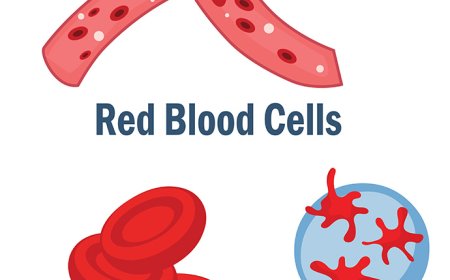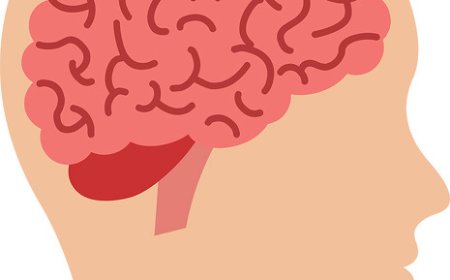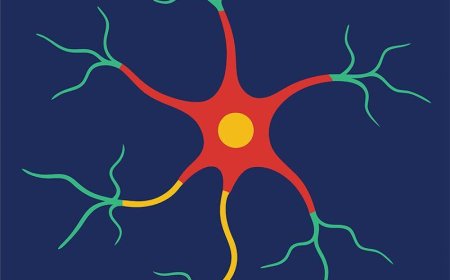The Circulatory System: How Blood, the Heart, and Vessels Keep You Alive
Explore the circulatory system in this detailed article for students aged 8–16. Learn how the heart, blood, and vessels work together to deliver oxygen and nutrients throughout the body. Includes quiz, vocabulary, and kid-friendly summary
🫀 The Circulatory System: How Blood, the Heart, and Vessels Keep You Alive
Every moment of every day, a system deep inside your body works to keep you alive and well. It moves oxygen to your lungs, delivers nutrients to your cells, picks up waste, and helps fight off disease. This system is called the circulatory system, and it’s one of the busiest and most important systems in your entire body.
At the center of the circulatory system is the heart—a strong, tireless muscle that pumps blood through a vast network of blood vessels. These vessels, which include arteries, veins, and capillaries, form a loop that reaches every corner of your body. The liquid that flows through this network is your blood, which carries oxygen, nutrients, and other important materials to your cells.
Together, the heart, blood, and blood vessels make up the cardiovascular system. The word “cardio” means heart, and “vascular” means vessels. This system works 24/7, even when you’re sleeping. Without it, your organs wouldn’t get what they need to survive, and your body wouldn’t be able to heal, grow, or even breathe properly.
❤️ The Heart: Your Body’s Power Pump
The heart is a hollow organ made of strong muscle tissue. About the size of your fist, it sits slightly to the left in your chest, protected by the ribcage. Its job is simple but vital: it keeps blood moving throughout the body.
Your heart has four chambers—two on the top (called atria) and two on the bottom (called ventricles). Blood flows into the heart through the atria and is pumped out through the ventricles. Valves between the chambers make sure the blood flows in only one direction.
With each beat, your heart:
-
Sends oxygen-rich blood to the body
-
Receives oxygen-poor blood back to send to the lungs
-
Works like a double pump—one side for the body, the other for the lungs
Your heart beats about 100,000 times a day, pumping around 2,000 gallons of blood daily!
🩸 Blood: The Body’s Delivery Fluid
Blood is not just red liquid—it’s a complex mix of cells and fluids with many important jobs. It moves oxygen, food, waste, hormones, and immune cells to the right places at the right times.
Blood is made up of:
-
Red blood cells, which carry oxygen from the lungs to the body
-
White blood cells, which fight infections
-
Platelets, which help stop bleeding by forming clots
-
Plasma, the yellowish liquid that carries nutrients, hormones, and waste
This mix keeps your body in balance. If you get a cut, platelets seal the wound. If a germ enters your system, white blood cells attack it. And every breath you take fuels red blood cells with the oxygen they need to keep you alive.
🩻 Blood Vessels: The Body’s Highway System
Blood flows through a vast network of blood vessels. If you stretched them all out, they would wrap around the Earth more than twice!
There are three types of blood vessels:
-
Arteries carry blood away from the heart. They have thick, muscular walls because they handle high pressure.
-
Veins carry blood back to the heart. They have valves to keep blood flowing in the right direction.
-
Capillaries are tiny, thin-walled vessels that connect arteries and veins. Here, oxygen and nutrients are delivered, and waste is picked up.
Capillaries are so small that red blood cells pass through them one at a time. Every cell in your body is close to a capillary—so it can get what it needs and get rid of what it doesn’t.
🔁 Circulation: The Body’s Blood Flow Loops
The circulatory system has two main loops, which work together to move blood around:
-
Pulmonary circulation – carries blood between the heart and the lungs. Blood picks up oxygen in the lungs and gets rid of carbon dioxide.
-
Systemic circulation – carries oxygen-rich blood from the heart to the rest of the body, then returns oxygen-poor blood back to the heart.
This double circulation system ensures that every part of your body—head to toe—gets the oxygen and nutrients it needs to survive.
🛡️ Keeping the Circulatory System Healthy
Because it works so hard and never stops, the circulatory system needs your care. Keeping your heart and blood vessels healthy helps your entire body.
Healthy habits include:
-
Eating nutritious foods (like fruits, vegetables, whole grains, and lean proteins)
-
Getting regular exercise, which strengthens your heart
-
Avoiding smoking or vaping, which can damage blood vessels
-
Staying hydrated to help blood flow
-
Getting enough sleep, so your heart gets time to rest and repair
🎉 Fun Facts About the Circulatory System
-
Your heart creates enough pressure to squirt blood 30 feet
-
Capillaries are so thin, they’re one cell thick
-
You have around 5 liters (or 1.3 gallons) of blood in your body
-
Blood takes about one minute to make a full loop around your body
-
The heart has its own electrical system and can beat outside the body (briefly) if supplied with oxygen
🧠 Vocabulary
-
Circulatory system – The system that moves blood around the body
-
Cardiovascular – Relating to the heart and blood vessels
-
Atrium/Atria – The upper chambers of the heart
-
Ventricle – The lower chambers of the heart
-
Artery – A blood vessel that carries blood away from the heart
-
Vein – A blood vessel that carries blood back to the heart
-
Capillary – The smallest blood vessel where exchanges happen
-
Plasma – The liquid part of blood
-
Platelet – A blood cell that helps with clotting
-
Pulmonary circulation – The loop between heart and lungs
-
Systemic circulation – The loop between heart and body
✅ Interactive Quiz: How Strong Is Your Heart Knowledge?
1. What is the main organ of the circulatory system?
A. Brain
B. Lungs
C. Heart
D. Liver
✅ Correct Answer: C
2. What carries blood away from the heart?
A. Veins
B. Arteries
C. Capillaries
D. Lungs
✅ Correct Answer: B
3. Which type of blood cell carries oxygen?
A. White blood cells
B. Platelets
C. Plasma
D. Red blood cells
✅ Correct Answer: D
4. What are the smallest blood vessels called?
A. Arteries
B. Capillaries
C. Veins
D. Tubes
✅ Correct Answer: B
5. What do platelets help with?
A. Carrying oxygen
B. Digestion
C. Fighting germs
D. Clotting and stopping bleeding
✅ Correct Answer: D
6. Which loop carries blood from the heart to the lungs and back?
A. Digestive loop
B. Nervous loop
C. Pulmonary circulation
D. Systemic circulation
✅ Correct Answer: C
7. What helps push blood through the body?
A. Bones
B. The heart’s pumping
C. The brain’s thinking
D. Lungs breathing
✅ Correct Answer: B
8. How many chambers does the human heart have?
A. 2
B. 3
C. 4
D. 6
✅ Correct Answer: C
9. What’s the job of the white blood cells?
A. Carry oxygen
B. Help clot blood
C. Fight infections
D. Control temperature
✅ Correct Answer: C
10. What can you do to keep your circulatory system healthy?
A. Eat junk food
B. Sleep all day
C. Exercise and eat well
D. Avoid all movement
✅ Correct Answer: C
🧒 Kid-Friendly Summary
Your circulatory system is like your body’s delivery team. The heart pumps, the blood carries, and the vessels transport everything your body needs—like oxygen and food—to stay alive. It's one of the most important systems in your body, and it never takes a break!





















































